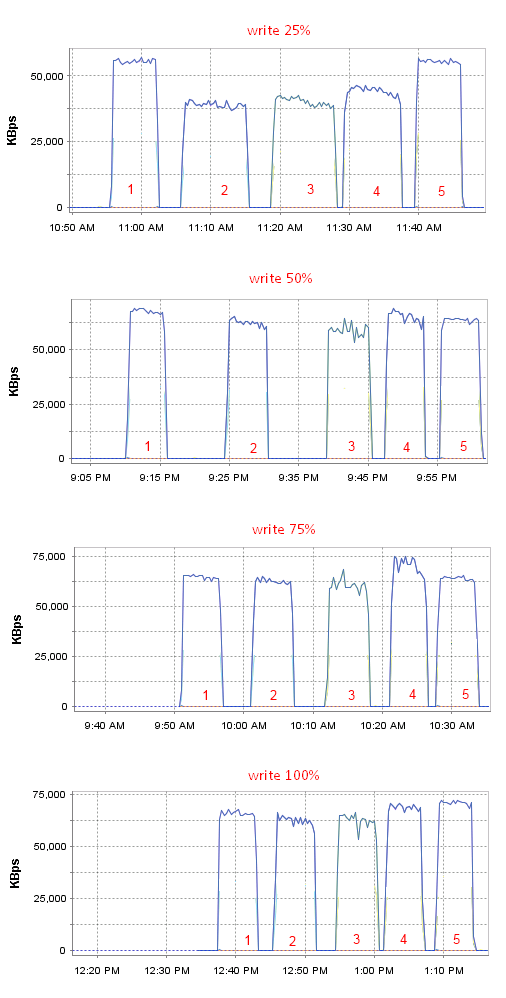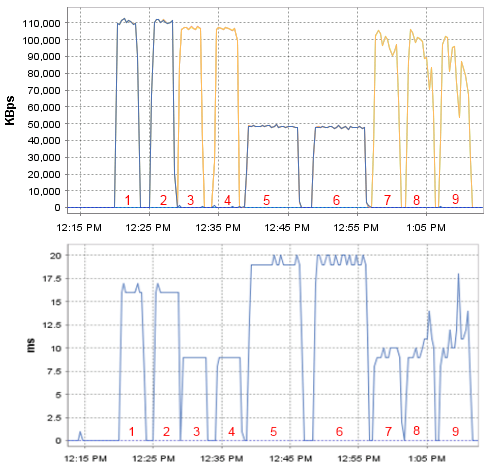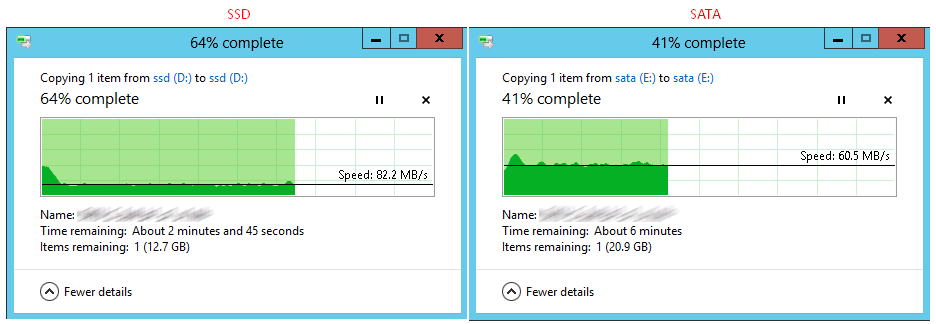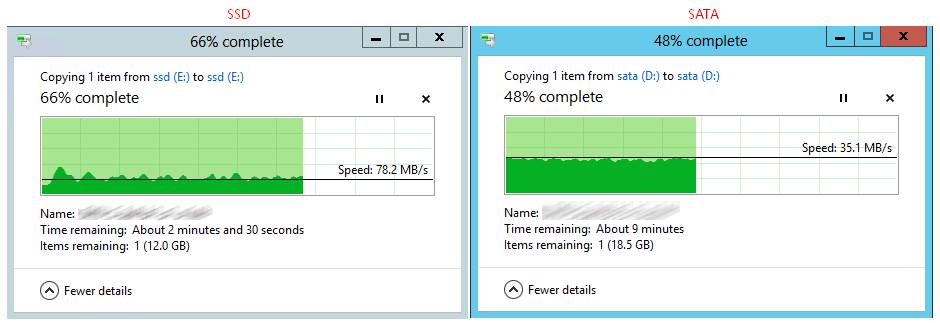HP DL120 G7 - second server life

Hi Habr! Overboard in 2017 and on the market, new HP G9 generation servers are available, and soon I think the HP G10 will appear.
But there is “no money”, and you decided to buy a BU server or to optimize an existing fleet of servers. And in this case, I want to draw your attention to a couple of points related to the disk subsystem of the HP DL120 G7 server.
The server had been in the warehouse for a couple of months after the branch was closed, and I decided to make something useful out of it in the form of file storage.
I got a server 628692-421 with a hot plug-in with 3.5 (4 pcs) disks, a Xeon E3-1240 processor, 16GB frames and a Smart Array P212 / 256MB controller with SAS 10k 400GB disks.
HP Smart Array P212
This controller can be found in almost all HP G5 / G6 / G7 generation servers. A list of servers can be found on the HPE QuickSpecs website .
If the server has an optional Smart Array controller installed, you can monitor the status of disks through ILO3.

In the screenshot, you can observe the status of the HGST HTS721010A disk, installing non-original disks in the HP server you risk receiving false information about the disks. In this case, the disk temperature is not correctly determined, as a result, the server displays the fan speed at 100% speed and the server turns into a sawmill.
Conclusion number 1 - not all drives are equally useful, "choose original HP drives."
By default, the HP Smart Array P212 controller only caches read operations, and it is recommended that you install the Battery Kit to enable caching of write operations.

In the absence of a Battery Kit, there is a chance of losing data when a power outage occurs. If you enable caching of write operations without a battery, you do this at your own risk.
If you do not turn on the cache for recording, the HDD will show results in speed much lower. A large read cache will not give a tangible effect on the result.
Let's take a look at how caching settings affect speed.
As parrots, I chose 38 GB VM cloning speed.
1 - Copy from SAS 10k to SATA 7k
2 - Copy from SAS 10k to SAS 10k (2,5inch)
3 - Copy from SATA 7k to SAS 10k
4 - Copy from SATA 7k to SAS 10k ( 2.5inch)
5 - Copying from a SAS 10k (2.5inch) drive to a SATA 7k drive

Conclusion No. 2 - give at least 50% of the size of the memory cache for writing.
About SAS disks
Pay attention to copying between SAS 10k disks, in some cases 10k plays 7k SATA disks.
It is worth recognizing that the local SAS 10k drives in servers are becoming less and less relevant; these drives cannot compete in the number of operations with SSDs.
HP Smart Array P212 + SSD
I still do not have SSDs in the servers and I decided to see how not the newest Smart Array controller will survive the SSD connection.
I had one single Kingston SHFS37 SSD on 120 GB which I took out of the laptop. I want to immediately note that for servers it is necessary to choose an SSD with protection against power failure, such protection is declared by manufacturers in the Intel DC and Kingston KC400 drives.
SSD has been determined and its status can be observed through ILO3.

SSD testing
1.2 - Copy from SATA drive to SSD drive
3.4 - Copy from SSD drive to SATA drive
5.6 - Copy from SATA drive to SATA drive
7.8.9 - Copy from SSD drive to SSD drive

If you disable write caching , SSD speed loss is not noticeable, while SATA HDD sags noticeably.

Conclusion No. 3 - SSDs show excellent speed and can be used without caching write operations.
HP Smart Array B110i
If the optional HP Smart Array controller is not in the server, the disks will work with the controller on the HP Smart Array B110i motherboard. Only SATA drives can be connected to the B110i.
HP Smart Array B110i Can be found in HP ML110, ML150, ML330, DL120, DL160, DL180, DL320 G6 generation servers, and in ML110, DL120, DL165 G7 generation servers. Also, this controller is found in some servers of the SL series.
By default, the controller operates in SATA Legacy mode, I note right away that this is not the most successful mode, with such settings the drives will work very slowly.
By default, the disk cache is disabled, if you turn it on there is a chance of losing data when there is a power outage.
Three controller operation modes are available:
1 - SATA RAID
2 - SATA AHCI
3 - SATA Legacy

VMware ESXi is not able to work with disks collected in the raid and connected to this controller, and for this I will test the server further by installing WS2012R2 on it.
1 - SATA Legacy
In SATA Legacy mode, Windows by default includes a software write cache, and this means that there is a possibility of losing data when a power outage occurs.


After disabling caching, the drop in speed for regular disks is terrible, 20 MB / s is a very good screenshot - and the results can be much worse.

2 - SATA AHCI
Software caching of write operations is also enabled by default.

After disabling caching, the HDD did not sink as much as in the case of SATA Legacy.

Conclusion number 4 - In cases where you do not need hardware RAID, the HDD should work in AHCI mode, and software caching of write operations should be disabled to guarantee data safety.
3 - SATA RAID
The HP Smart Array B110i only supports the “software raid” of R10 and R1. I would like to write something bad about him - but I don’t think that you may have problems with him, but still, whenever possible, upgrade to a full HP HP Smart Array, with cache memory and batteries.
You cannot enable write caching in Windows; this function is not supported by controller drivers. For HP Smart Array P212, software caching cannot be enabled either.

This time I combined the two Sata discs in R1, and therefore the average speed turned out more.


About reliability and data security
In the process of how I switched disks between controllers and changed disks, the configuration of controllers was lost several times and all arrays fell apart. Be careful with such castling.
I draw attention to this because HP previously declared compatibility with the configuration of RAID arrays when moving disks between controllers or between servers.

Conclusion number 5 - keep backups on a separate device.
TOTAL
1 - Not all drives are equally useful, “Choose Original HP Drives.”
2 - Give at least 50% of the size of the memory cache for recording.
3 - SSD shows excellent speed and can be used without caching write operations.
4 - In cases where you do not need hardware RAID, the HDD should work in AHCI mode, and the software caching of write operations should be disabled to ensure data safety.
5 - keep backups on a separate device.
P.S.
To configure the disk subsystem from the graphical console, you need to download the HP Smart Start CD 8.70 (B) boot disk image .
For greater convenience when working with the server, the license for HP ILO Advanced does not hurt, a demo license can be obtained here .
